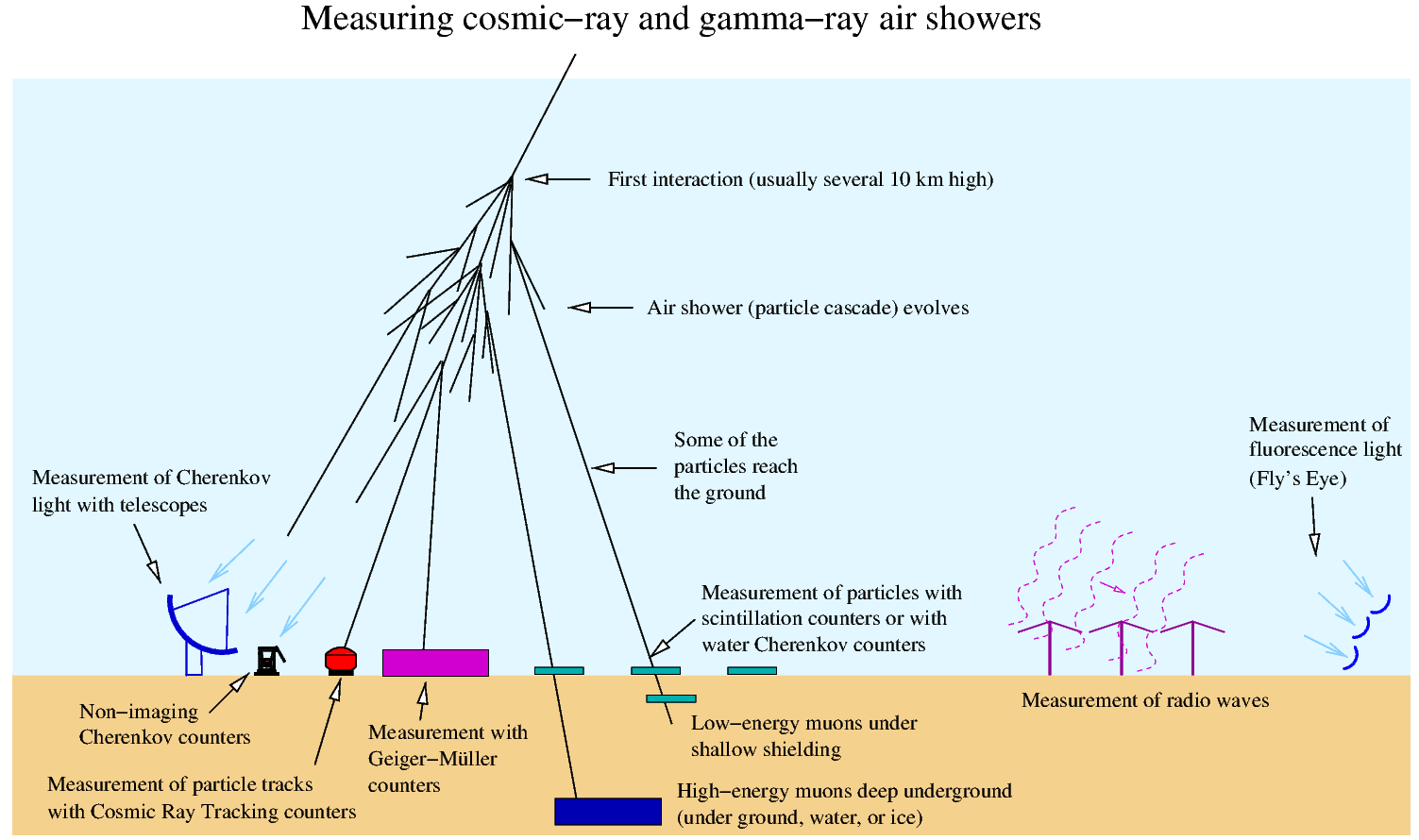
Hundreds of single particles arrive per square meter per second but extensive air showers are less common. Therefore, coincidences of several particle detectors are required. When looking for small showers with perhaps a few thousand particle, tens or hundreds of detectors separated by 10-30 meters are usually used. When looking for the much less frequent very large showers with billions of particles, the detectors can be placed at separations of about a kilometer to the next neighbour.
Showers can be detected at even larger distances by the fluorescence light which is emitted by nitrogen molecules when charged particles are passing near-by. Imaging devices ('telescopes' with photomultipliers as cameras) can see the track of air showers through the atmosphere. This method was first used by the Fly's Eye experiment. Because the fluorescence light is very weak, only the most energetic showers can be detected this way.
With similar light-sensitive devices, the more intense Cherenkov light of showers can be detected. Since the Cherenkov light is only emitted at a narrow angle to the shower axis, it can be seen only when being at most a few hundred meters from the shower axis.